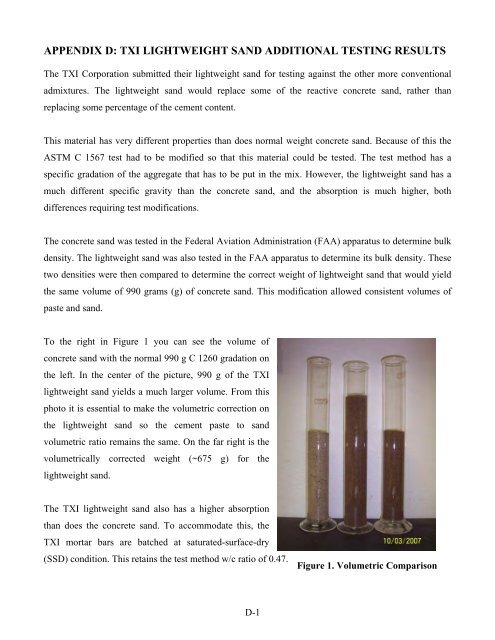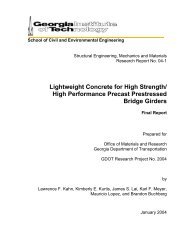Special-Uses-Alkali - Expanded Shale & Clay
Special-Uses-Alkali - Expanded Shale & Clay
Special-Uses-Alkali - Expanded Shale & Clay
You also want an ePaper? Increase the reach of your titles
YUMPU automatically turns print PDFs into web optimized ePapers that Google loves.
APPENDIX D: TXI LIGHTWEIGHT SAND ADDITIONAL TESTING RESULTSThe TXI Corporation submitted their lightweight sand for testing against the other more conventionaladmixtures. The lightweight sand would replace some of the reactive concrete sand, rather thanreplacing some percentage of the cement content.This material has very different properties than does normal weight concrete sand. Because of this theASTM C 1567 test had to be modified so that this material could be tested. The test method has aspecific gradation of the aggregate that has to be put in the mix. However, the lightweight sand has amuch different specific gravity than the concrete sand, and the absorption is much higher, bothdifferences requiring test modifications.The concrete sand was tested in the Federal Aviation Administration (FAA) apparatus to determine bulkdensity. The lightweight sand was also tested in the FAA apparatus to determine its bulk density. Thesetwo densities were then compared to determine the correct weight of lightweight sand that would yieldthe same volume of 990 grams (g) of concrete sand. This modification allowed consistent volumes ofpaste and sand.To the right in Figure 1 you can see the volume ofconcrete sand with the normal 990 g C 1260 gradation onthe left. In the center of the picture, 990 g of the TXIlightweight sand yields a much larger volume. From thisphoto it is essential to make the volumetric correction onthe lightweight sand so the cement paste to sandvolumetric ratio remains the same. On the far right is thevolumetrically corrected weight (~675 g) for thelightweight sand.The TXI lightweight sand also has a higher absorptionthan does the concrete sand. To accommodate this, theTXI mortar bars are batched at saturated-surface-dry(SSD) condition. This retains the test method w/c ratio of 0.47.Figure 1. Volumetric ComparisonD-1















